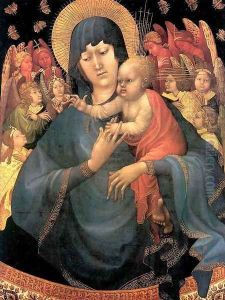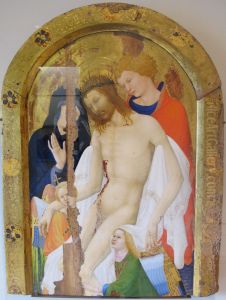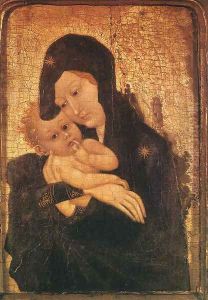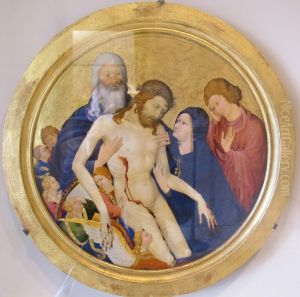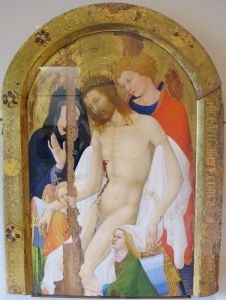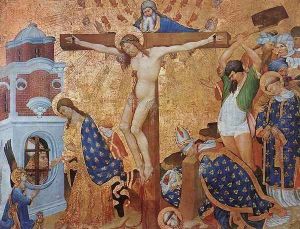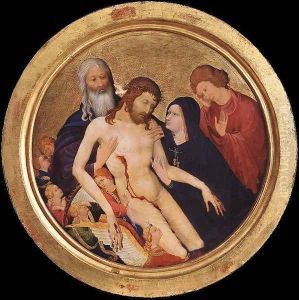Jean Malouel Paintings
Jean Malouel, also known as Jan Maelwael, was a Netherlandish artist who was born around 1365, likely in Nijmegen, part of the Duchy of Guelders (now in the Netherlands). Little is known about his early life and training, but he is first documented as working in Paris in 1397. His career took a significant turn when he entered the service of Philip the Bold, Duke of Burgundy, one of the most powerful patrons of the arts in late medieval Europe.
Malouel served as the official court painter to the Duke of Burgundy and was responsible for producing altarpieces, portraits, and illuminations. He became known for his innovative use of color and his ability to convey narrative and emotion in his works. Malouel's style is characterized by a blend of the International Gothic style with emerging elements of early Netherlandish painting, which would later flourish in the 15th century. Some of his notable works include the 'Grande Pietà Roundel', now in the Louvre, and the 'Dijon Altarpiece', although the altarpiece has been attributed to him on stylistic grounds and its actual execution is debated among scholars.
As a court painter, Malouel held a prestigious and well-compensated position. He was involved in various projects, including the design and decoration of tombs and heraldic emblems. His influence extended beyond painting, as he was engaged in the broader artistic and cultural programs at the Burgundian court, which were instrumental in the development of the Northern Renaissance. Malouel's work reflects the opulence and refined taste of the Burgundian court, and his paintings are noted for their intricate detail and rich, jewel-like colors.
Jean Malouel's exact date of death is not certain, but he is believed to have died in 1415. His legacy carried on through his family, as he was the uncle of the famous Limbourg brothers, who were renowned manuscript illuminators. Through his work and his influence on his nephews, Malouel played a crucial role in the transition of European art from the medieval period to the early Renaissance. Unfortunately, because his works were often created for private devotion or specific courtly contexts, few have survived, and his contributions are not as widely recognized as those of later Netherlandish masters.
